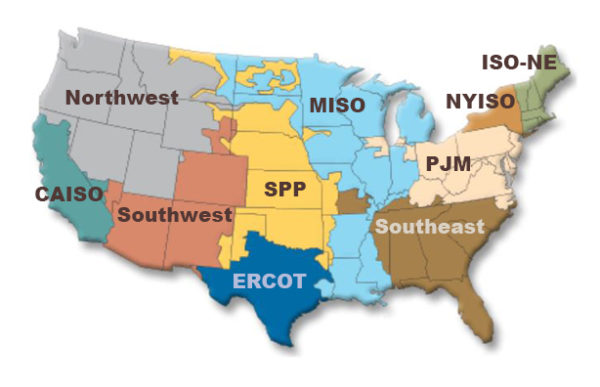A study of transmission planning in the Great Plains, Midwest, and Mid-Atlantic states says that current processes involving regional transmission organizations (RTOs) are impeding the development of low-cost renewable power.
The analysis was done by Concentric Energy Advisors for the American Council on Renewable Energy (ACORE) as part of the Macro Grid Initiative in coordination with the American Clean Power Association and the Solar Energy Industries Association.
The report said that existing transmission planning processes have been insufficient in preparing the electric grid for a future resource mix that includes large amounts of renewable energy. Because transmission construction involves long lead times, typically between seven and 10 years, the window “may be closing to develop the needed transmission expansion” to achieve a range of renewable energy goals.

ACORE President and CEO Gregory Wetstone said in a statement that current transmission planning processes “are not working to deliver the affordable clean energy that states, businesses and consumers are demanding.”
The report identified what it said are “primary deficiencies and potential solutions” for greater renewable deployment in the Southwest Power Pool (SPP), Midcontinent Independent System Operator (MISO), and the PJM Interconnection (PJM).
It said that the focus in SPP, MISO, and PJM has been on developing solutions to meet current reliability and economic needs. Those approaches were not designed to identify the necessary transmission expansion to enable future renewable energy development.
‘Essentially stalled’
What’s more, transmission development in recent years “has primarily focused on reliability and low voltage projects,” many of which fall outside regional planning processes. As a result, development has “essentially stalled” on transmission projects rated at 345 kV and above, the report said.

Image: FERC
Based on a interviews with market participants and stakeholders in the three regions, the report concluded:
- Centrally coordinated planning at the interregional and RTO levels is needed to identify the geographic areas where untapped renewable energy resources exist and develop optimal and cost-efficient paths for transmission infrastructure development to deliver low-cost renewable resources to load centers.
- Interregional transmission planning should rely on either a unified national interregional planning model or regional models that have sufficiently aligned planning objectives, assumptions, benefit metrics, and cost allocation methodologies to properly assess benefits and costs of interregional transmission projects.
- Reasonable expectations of renewable resource expansion should be integrated into “Futures” assumptions in transmission planning studies. This should include reasonable forecasts for future storage, renewables, and gas generation additions, as well as fossil fuel plant retirements.
- Benefit metrics used to assess the comparable benefit of projects relative to their costs should be expanded and standardized across regions to the extent possible.
- Planning models and/or processes should better reflect the expected real-time operations and economic dispatch of generation resources.
- Competitive processes would benefit from more coordinated planning where resource zones are identified, and infrastructure solutions that address optimal paths to market are solicited.
- Cost allocation for generator interconnection upgrades should be shared with load or other interconnecting generators based on a fair allocation of benefits.
The report may be accessed here.
This content is protected by copyright and may not be reused. If you want to cooperate with us and would like to reuse some of our content, please contact: editors@pv-magazine.com.









“impeding the development of low-cost renewable power”. How low cost is this renewable power when major grid changes are needed along with massive energy storage? Did anyone really think that the renewable energy transition and accommodating distributed generation would be inexpensive?